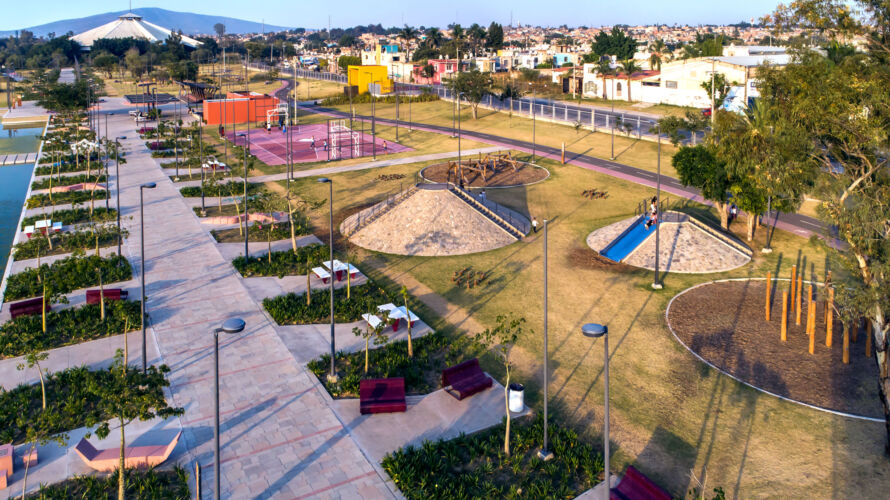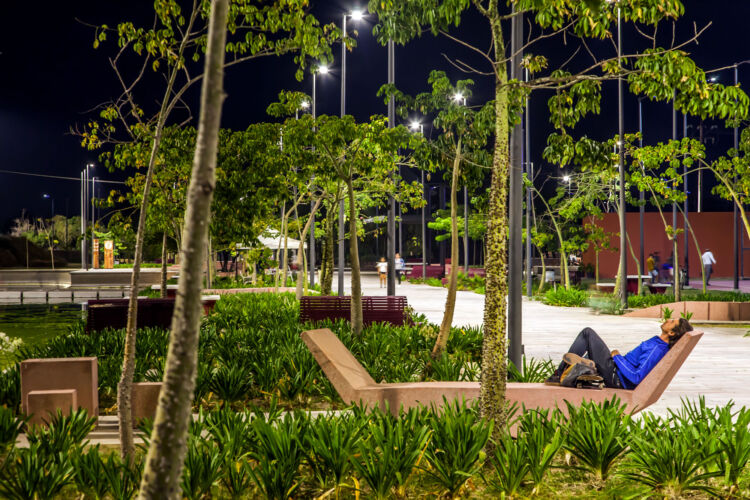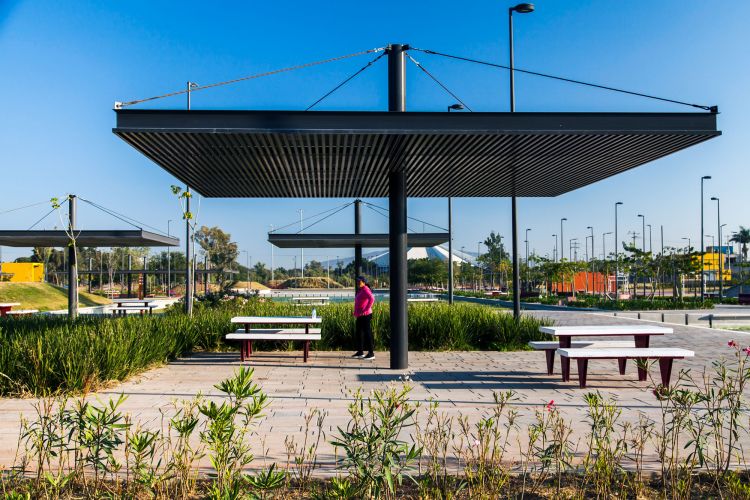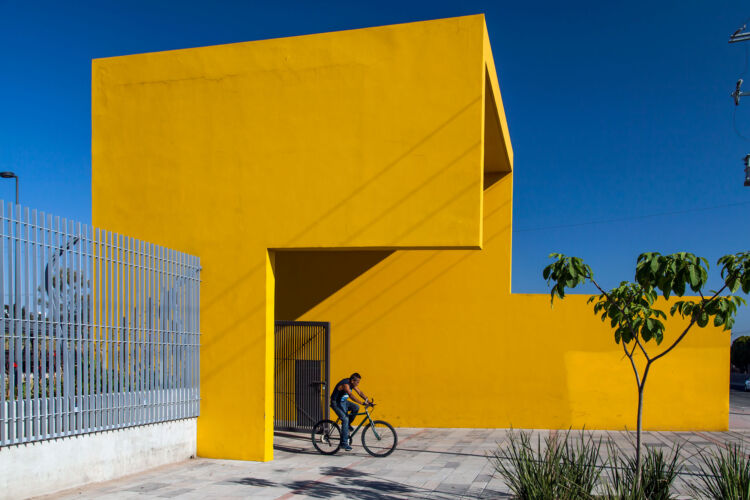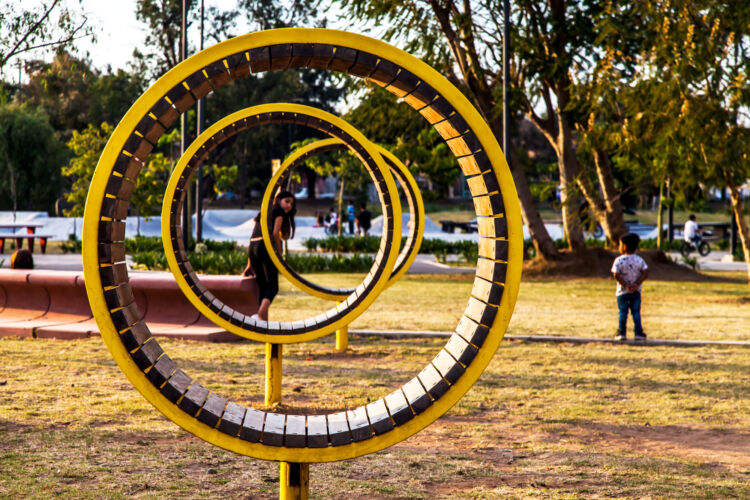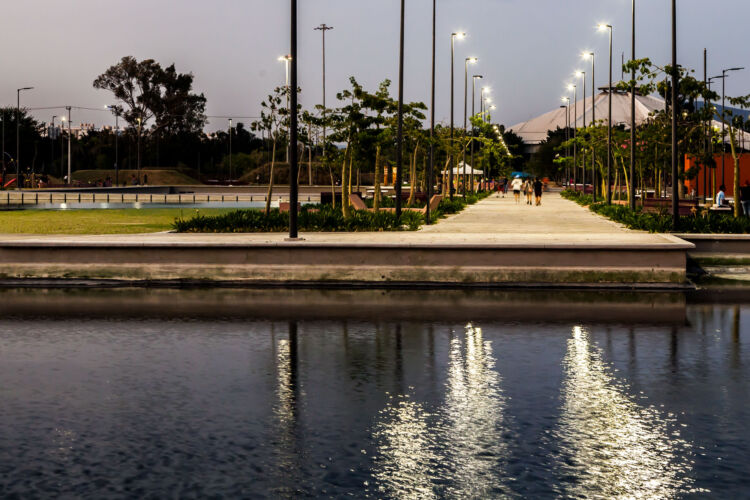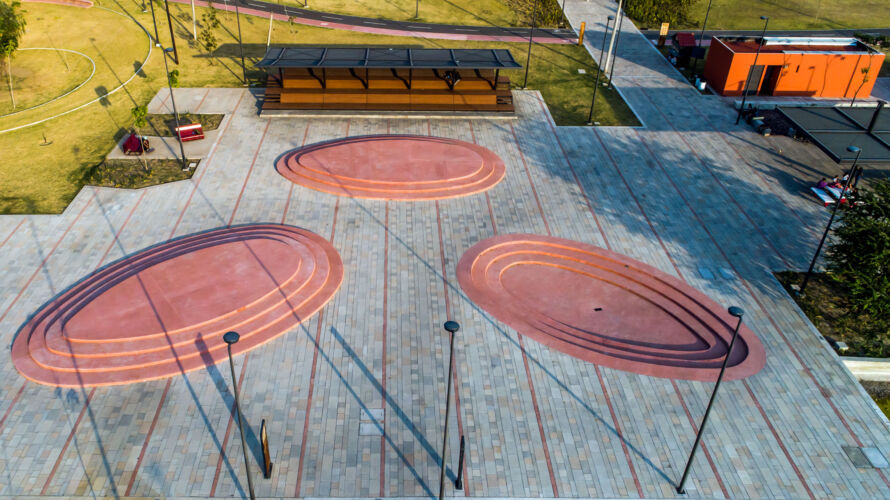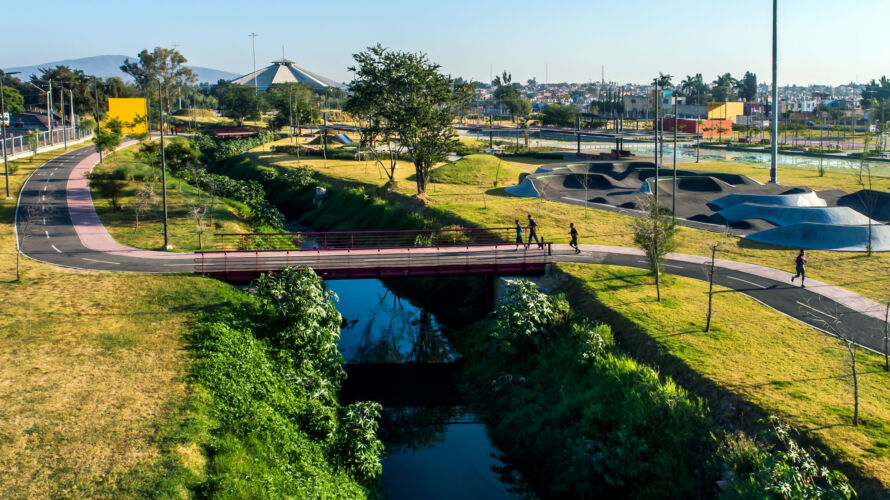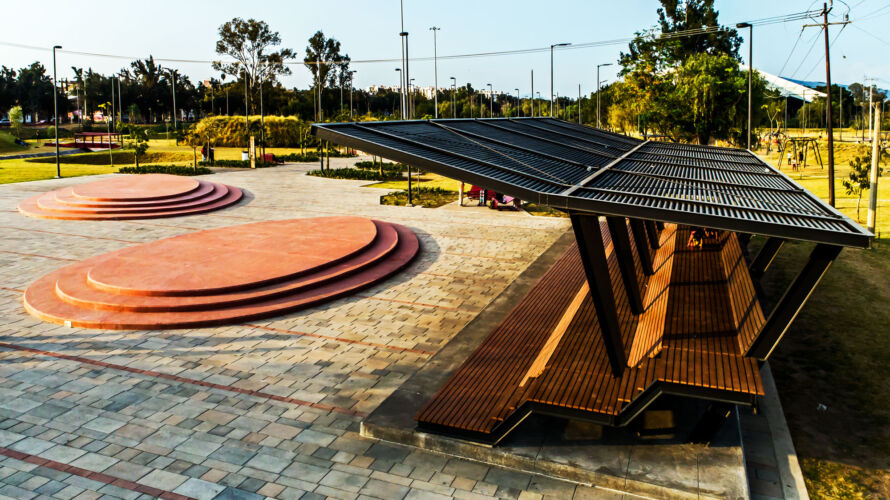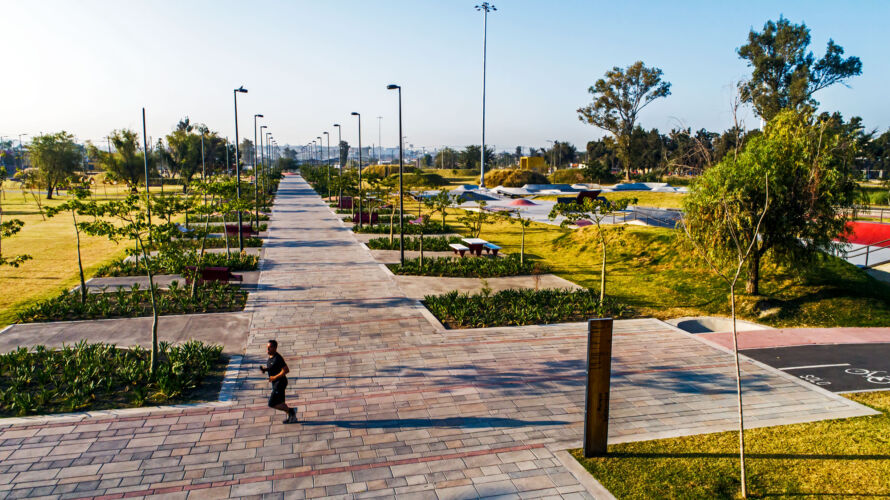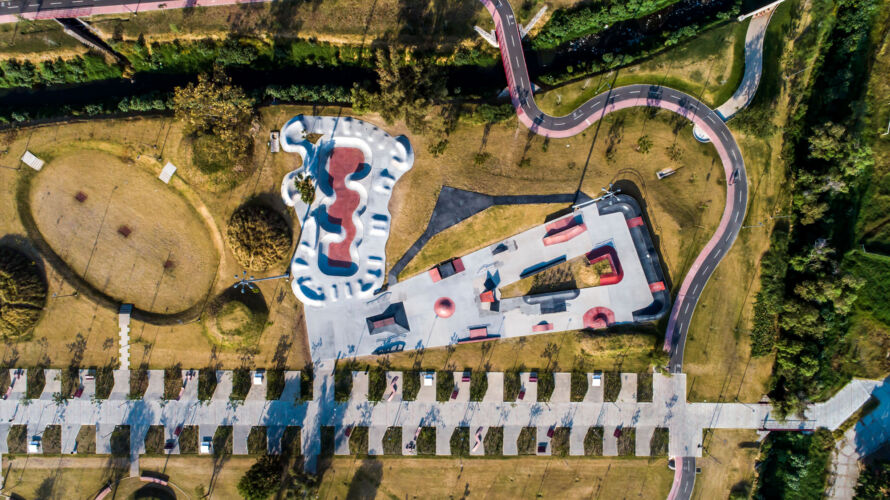The new Solidaridad Oriente Park was proposed during the conceptualization process of the Integral Rehabilitation Master Plan of Solidaridad Park, which was built in 1991 on the occasion of the First Ibero-American Summit held in Guadalajara, Jalisco. The entire park covers an area of 110 hectares, making it one of the largest in the metropolitan area.
The park is a public space whose central objective is to address social backwardness in this area by providing a space for recreation and family integration, sports, culture, education, and socialization.
The project’s conceptual design aimed to create an urban-landscape intervention that would function as a new “alameda” integrating physically and socially the municipalities of Tonalá and Guadalajara. This area had been characterized by social problems of violence and alienation.
The spatial structure of the park is based on a large north-south directional axis, like a boulevard or promenade, which sequentially connects sports spaces such as the skatepark, basketball courts, open-air gyms, and areas for children’s play and picnics. The directional axis changes in the middle of the park through a central plaza that connects the entrances of both Guadalajara and Tonalá. At this point, access portals were designed that allow crossing the park transversely from either of the two municipalities, bringing their inhabitants closer to the Guadalajara metro station.
A system of rectangular lakes accompanies the second part of the directional axis; these lakes function as open-air tanks for irrigation with treated water from the new treatment plant built in the southern area.
The park offers a perimeter circuit of 3.6 km for jogging and cycling, which connects hills, pedestrian bridges, and various gardens. The boulevard theme that crosses the park in its entirety from north to south is planted with ceiba trees that will form a powerful vegetal axis in the short term, with the magnificent and monumental trees of the subtropical and tropical regions of Mexico.
The park is a public space whose central objective is to address social backwardness in this area by providing a space for recreation and family integration, sports, culture, education, and socialization.
